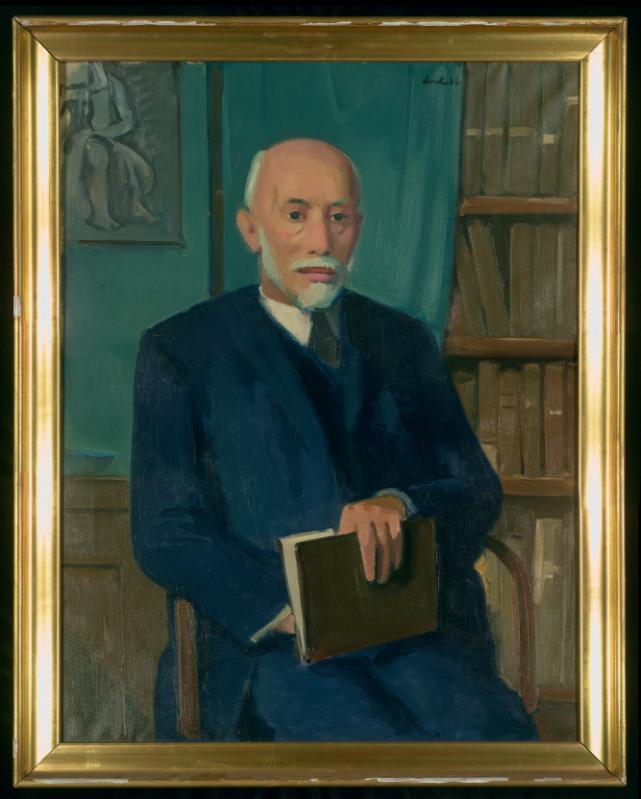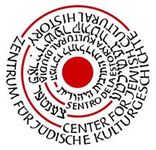Introduction and Literature
Despite the fact that the Rabbinic material is of vast dimensions, significant progress has been made in the past decades resulting in considerable correction and supplementation of the older dictionaries of Hebrew/Aramaic. This progress is reflected in the following dictionaries and collections:
Sokoloff, Michael. 22002a. A Dictionary of Jewish Palestinian Aramaic of the Byzantine Period. Ramat Gan: Bar Ilan University Press.
Sokoloff, Michael. 2002b. A Dictionary of Jewish Babylonian Aramaic of the Talmudic and the Geonic periods. Ramat Gan: Bar Ilan University Press.
Sokoloff, Michael. 2003. A Dictionary of Judean Aramaic. Ramat Gan: Bar Ilan University Press.
Sokoloff, Michael. 2014. A Dictionary of Christian Palestinian Aramaic. Leuven: Brill.
Lieberman, S. 1965. Greek in Jewish Palestine. New York: The Jewish Theological Seminary of America.
Sperber, Daniel. 1984. A Dictionary of Greek and Latin Legal terms in Rabbinic Literature. Jerusalem: Bar-Ilan University Press.
Sperber, Daniel. 2012. Greek in Talmudic Palestine. Ramat Gan: Bar-Ilan University Press.
Apart from these outstanding works, nowadays it has become possible to consult further important, pioneering publications and tools concerning the linguistic analysis of Greek loanwords in Rabbinic texts, i.a.:
Heijmans, Shai. 2013. Greek and Latin loanwords in Mishnaic Hebrew. Lexicon and phonology (in Hebrew). Tel Aviv University PhD thesis.
Shoval-Dudai, Nurit. 2015. The integration of Greek and Latin loanwords in post-biblical Hebrew, in: Scripta Classica Israelica 34: 215–225.
Shoval-Dudai, Nurit (forthcoming). A Glossary of Greek and Latin Loanwords in Classical Hebrew (in Hebrew). Academy of the Hebrew Language.
Our knowledge of post-classical Greek (and Latin) has increased with the further discoveries and publications of papyrological, epigraphic and vulgar sources with a special stress on dialectology and the patristic literature (and their respective dictionaries). In addition to that, there has also been enormous progress in the field of Byzantine Studies and areal studies, in general, so that nowadays (apart from lexicography) we have several up-to-date handbooks, encyclopaedias, monographs at our disposal, such as:
Trapp, Erich et al. 2001-2017. Lexikon zur Byzantinischen Gräzität besonders des 9.-12. Jahrhunderts. Wien: ÖAW. Online
Kriaras, E. 2001, 2003. Dictionary of Medieval Vulgar Greek Literature (1100-1669), from A – παραθήκη. Online
Λεξικό της Κοινής Νεοελληνικής, Thessaloniki 1998 (= LKN). Online
Babiniotis, G. / Μπαμπινιώτης Γ. 2010 (22005, 1998). Λεξικό της Νέας Ελληνικής Γλώσσας. Αθήνα: Κέντρο Λεξικολογίας.
Monographs in contact linguistics, esp. on the Greek loanwords in other Non-Indo-European languages of the Greco-Roman periods:
Butts, Aaron Michael. 2016. Language Change in the Wake of the Empire. Syriac in Its Greco-Roman Context. Winona Lake, Indiana: Eisenbrauns.
Sokoloff, Michael. 22012. A Syriac Lexicon: A translation of the Latin, Correction, Expansion and Update of C. Brockelmann’s Lexicon Syriacum. 2nd. Corrected printing. Winona Lake, Indiana: Eisenbrauns.
Last but not least the rapidly progressing digitization both of the Rabbinic and of the Greek corpora - from Ancient to Modern Greek -, and other Databases on Hebrew and Greek loanwords, such as the Semantics of Ancient Hebrew Database (Online) or the DDGLC-Project: Database and Dictionary of the Greek loanwords in Coptic (Online) open up new dimensions for the research in this field.
Further Literature
Babiniotis, G. / Μπαμπινιώτης Γ. 2010. Ετυμολογικό Λεξικό της Νέας Ελληνικής Γλώσσας. Ιστορία των λέξεων. Αθήνα: Κέντρο Λεξικολογίας.
Beekes, Robert. 2010. Etymological Dictionary of Greek. Vol. 1. Leiden Indo-European etymological dictionary series 10/1. Leiden et al.: Brill.
Beekes, Robert. 2010. Etymological Dictionary of Greek. Vol. 2. Leiden Indo-European etymological dictionary series 10/2. Leiden et al.: Brill.
Brüll, A. 1869. Fremdsprachliche Redensarten in den Talmuden und Midraschim. Leipzig.
Brüll, A. 1873. Trachten der Juden im nachbiblischen Alterthume. 1. Frankfurt am Main.
Brüll, A. 1874. Miscellen. In: Jahrbücher für jüdische Geschichte und Literatur 1: 221-237.
Cohen, Boaz. 1966. Jewish and Roman Law. 2 Volumes. New York.
Cuomo, Luisa. 1974. Le glosse volgari dell' 'Aruch di R. Nathan ben Jechj'el da Roma. PhD. Jerusalem: Hebrew University of Jerusalem.
Dalman, Gustav. 1905 / 1989. Grammatik des jüdisch-palästinischen Aramäisch. Darmstadt: Wissenschaftliche Buchgesellschaft.
Fürst, Julius. 1890. Glossarium Graeco-Hebraeum, Strassburg.
Fürst, Julius. 1891. Quelques mots midrashiques empruntés au grec. in: Revue des Études Juives. 23: 129-131.
García Martínez, Florentino. 2003. Greek Loanwords in the Copper Scroll. In: Jerusalem, Alexandria, Rome: Studies in Ancient Cultural Interaction in Honour of A. Hilhorst. 119-145. Edited by Florentino García Martínez; Gerard P. Luttikhuizen. Leiden: Brill.
Girón, Luis F. 1986. Vocablos griegos y latinos en éxodo Rabbah 1. In: Sefarad. 46: 219-228.
Heijmans, Shai. 2013. Greek Loanwords. In: Encyclopedia of Hebrew language and linguistics 2. G-O. Edited by Geoffrey Khan. Leiden: Brill et al.
Heijmans, Shai. 2013. Greek and Latin Loanwords in Mishnaic Hebrew: Lexicon and Phonology. PhD. Tel-Aviv: Tel-Aviv University.
Heijmans, Shai. 2014. A Remark on the Form of Greek Loanwords in the Targum. In: Aramaic Studies 12: 27-31.
Hirschman, Marc. 2010. The Greek Words in the Midrash Genesis Rabbah. (in Hebrew) In: Tiferet Leyisrael: Jubilee Volume in Honour Of Israel Francus. Edited by Roth, Joel; Schmelzer, Menahem; Francus, Yaacov. New York: Jewish Theological Seminary.
Jacobson, Howard M. 1997. Two Greek Words in Genesis Rabbah. In: Scripta Classica Israelica 16: 212-214.
Joosten, Jan. 2001. Greek Words Shared by the Peshitta and Targums to the Pentateuch. In: Biblical Hebrew, Biblical Texts. Essays in Memory of Michael P. Weizman. 165-177. Edited by Rapaport-Albert, Ada; Greenberg, Julian. Journal for the Study of the Old Testament Supplement Series 333. The Hebrew Bible and its Versions 2. Sheffield: Sheffield Academic Press.
Katsikadeli, Christina. 2019. Language Contact and Contact Induced Change in the Light of the (Digital) Lexicography of Greek Loanwords in the Non-Indo-European Languages of the Greco-Roman worlds (Coptic, Hebrew/Aramaic, Syriac). In: Trends in Classics. Supplementary Volume 72: 21-40.
Krauss, Samuel. 1893. Zur griechischen und lateinischen Lexikographie aus jüdischen Quellen. In: Byzantinische Zeitschrift 2: 494ff.
Krauss, Samuel. 1898-1899. Griechische und lateinische Lehnwörter im Talmud, Midrasch und Targum. Mit Bemerkungen von Immanuel Löw. 2 Vols. Berlin: Calvary. Reprint: Hildesheim: Olms 1964.
Krauss, Samuel. 1937. Additamenta ad librum Aruch completum Alexandri Kohut. Wien / New York 1955.
Krauss, Samuel. 1948. Paras we-Romi ba-Talmud u-va-midrashim. Jerusalem: Mosad ha-rav Quq.
Kriaras, Emmanouil. 1969. Λεξικό της Μεσαιωνικής Ελληνικής Δημώδους Γραμματείας, 1100-1669. Thessaloniki: Κέντρο Ελληνικής Γλώσσας.
Kriaras, E. 2001. Dictionary of Medieval Vulgar Greek Literature (1100-1669). From A - Σ. Thessaloniki: KEG
Krivoruchko, Julia G. 2012. Greek Loanwords in Rabbinic Literature: Reflections on Current Research Methodology. In: Greek Scripture and the Rabbis: Studies from the European Association of Jewish Studies Seminar. 193-216. Edited by Law, Timothy M.; Salvesen, Alison G.. Contributions to Biblical Exegesis and Theology. Leuven: Peeters.
Lampe, G.W.H. 1972. A Patristic Greek Lexicon. Oxford: Clarendon Press.
Levy, Jakob. 1924. Wörterbuch über die Talmudim und Midraschim. Vols. I-IV. Berlin: Harz. Reprint: Darmstadt: Wissenschaftliche Buchgesellschaft 1963.
Liddell, Henry George; Scott, Robert; Jones, Henry Stuart. 1996. A Greek-English Lexicon with Revised Supplement. 9th ed. Oxford: Clarendon Press.
Muraoka, T. 2009. A Greek-English Lexicon of the Septuagint. Leuven: Peeters.
Perles, Felix. 1917. Nachlese zum neuhebräischen und aramäischen Wörterbuch. In: Festschrift A. Schwarz zum siebzigsten Geburtstage 15. Juli 1916 gewidment von Freunden und Schülern. 293-310. Edited by Krauss, S.; Aptowitzer, V. Wien / Berlin: Löwit.
Perles, J. 1871. Etymologische Studien zur Kunde der rabbinischen Sprache und Alterthümer. Breslau.
Perles, J. 1873. Zur rabbinischen Sprach- und Sagenkunde. Breslau.
Shoval-Dudai, Nurit. 2014. Identical Lemmata of Greek and Latin Loanwords in the Historical Dictionary of the Hebrew Language: Classes and Criteria. In: Studies in Mishnaic Hebrew and Related Fields: Proceedings of the Yale Symposium on Mishnaic Hebrew. 293-336. Edited by Elitzur A. Bar-Asher Siegal; Aaron J. Koller. New Haven: Program in Judaic Studies, Yale University.
Shoval-Dudai, Nurit. 2015. The Integration of Greek and Latin Loanwords in post-Biblical Hebrew. In: Scripta Classica Israelica 34: 215-225.
Shoval-Dudai, Nurit. 2017. Ancient Greek in Ancient Hebrew: Unattested Greek Loanwords in Post-Biblical Hebrew. In: Ελληνική ετυμολογία / Greek etymology. 1st International Conference on Greek etymology, the Institute of Modern Greek Studies of the Aristotle University of Thessaloniki, on the 5th and 6th November 2015, at the Teloglion Fine Arts Foundation of the Aristotle University of Thessaloniki. 513-530. Edited by Tzitzilis, Chr.; Papanastassiou, G. Thessaloniki: Institute of Modern Greek Studies.
Shoval-Dudai, Nurit. forthcoming. A Glossary of Greek and Latin Loanwords in Classical Hebrew (in Hebrew). Academy of Hebrew Language.
Sperber, Daniel. 1977–1979. Greek and Latin words in rabbinic literature: Prolegomena to a new dictionary of classical words in rabbinic literature. In: Annual of Bar-Ilan University Studies in Judaica and the Humanities 14-15: 9-60; 16-17: 9-30.
Sperber, Daniel. 1982. Essays on Greek and Latin in the Mishna, Talmud and Midrashic literature. Jerusalem.
Sznol, Shifra. 1991. «Jefe» o «supremo». Estudio lexicográfico de compuestos con αρχι en fuentes judías y en la koine oriental. In: Miscelánea de Estudios Árabes y Hebraicos. Sección Hebreo 40: 55-70.
Tropper, Amran Don. 2005. Roman Contexts in Jewish Texts: On "diatagma" and "prostagma" in Rabbinic Literature. Jewish Quarterly Review 95: 207-227.
Veltri, Giuseppe. 2002. Greek Loanwords in Talmud Yerushalmi: Some New Suggestions. In: Journal of Semitic Studies 47: 237-240.
Wasserstein, Abraham. 1993. A Note on the Phonetic and Graphic Representation of Greek Vowels and of the Spiritus Asper in the Aramaic Transcription of Greek Loanwords. In: Scripta Classica Israelica 12: 200-208.
Wolters, A. 1996. Targumic כרובת (Zechariah 14:20) = Greek κορυϕαία? In: Journal of Biblical Literature 115: 710-713.
Yuditsky, Alexey (Eliyahu). 2017. qosin and qarpayot. In: Studies in Mishnaic Hebrew and Related Fields: Proceedings of the Yale Symposium on Mishnaic Hebrew, May 2014. 411-422. Edited by Bar-Asher Siegal, Elitzur A.; Koller, Aaron J. Jerusalem: Magnes Press.
Yuditsky, Alexey (Eliyahu); Shoval-Dudai, Nurit. 2018. לפתרון התיבות "אבהטס" ו"אמבטיס". In: Leshonenu 80: 493-396.
Zuntz, G. 1956. Greek Words in the Talmud. In: Journal of Semitic Studies 1: 129-140.




